Submitted by Flora Jing Lin Ng
Neri&Hu transforms ex-industrial building into it's own Shanghai office
China Architecture News - Dec 09, 2020 - 22:52 7860 views

The block, named No.31, is situated within a small complex of ex-industrial buildings in the bustling Jing'an Temple area, which used to be the office and dormitory building for the local telecoms company. Today, it's structure and materials have been largely retained and is home to inter-disciplinary Neri&Hu design and Research Office; with Design Republic Offices on the second floor and Neri&Hu on the third and fourth floors.
Founded in 2004 by partners Lyndon Neri and Rossana Hu, the studio is based in Shanghai, China, and works internationally to provide architecture, interior, master planning, graphic and product design services.
As a practice, Neri&Hu has always sought after adaptive reuse projects. "We were immediately drawn to this project as yet another opportunity to reutilize an artifact of urban excess, to celebrate and even elevate the mundane," said Neri&Hu.

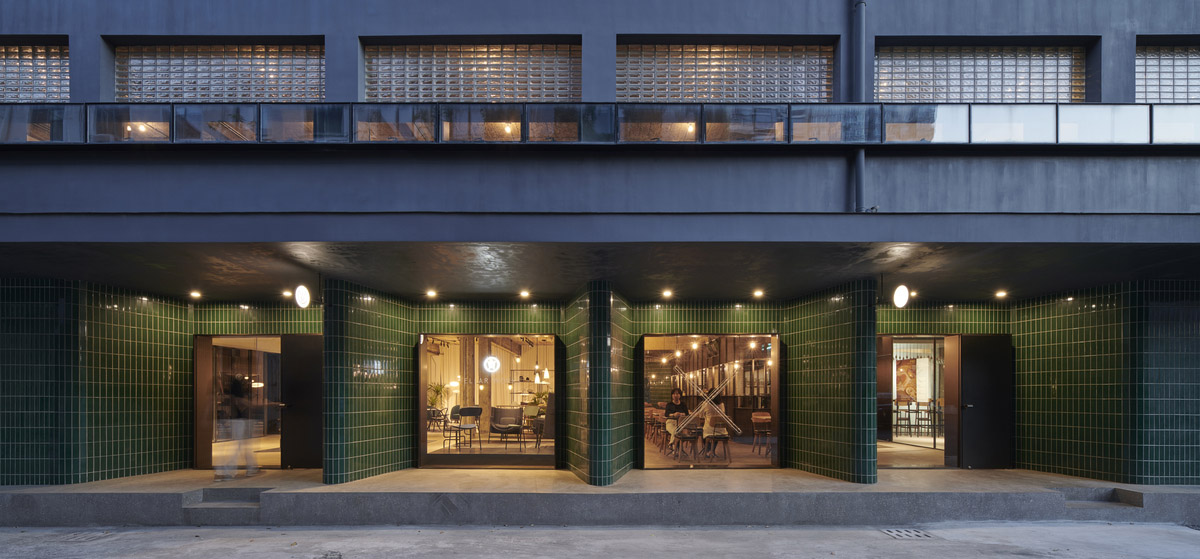
Adaptive reuse is the act of giving older buildings a new purpose and retaining some or all of its historic features for new users.
"Instead of just discarding it for a newer, yet still unremarkable, building as the previous tenant saw fit to do, we embraced instead the potential to transform it and give it a chance to not only survive but thrive as a beacon for design," said Neri&Hu.

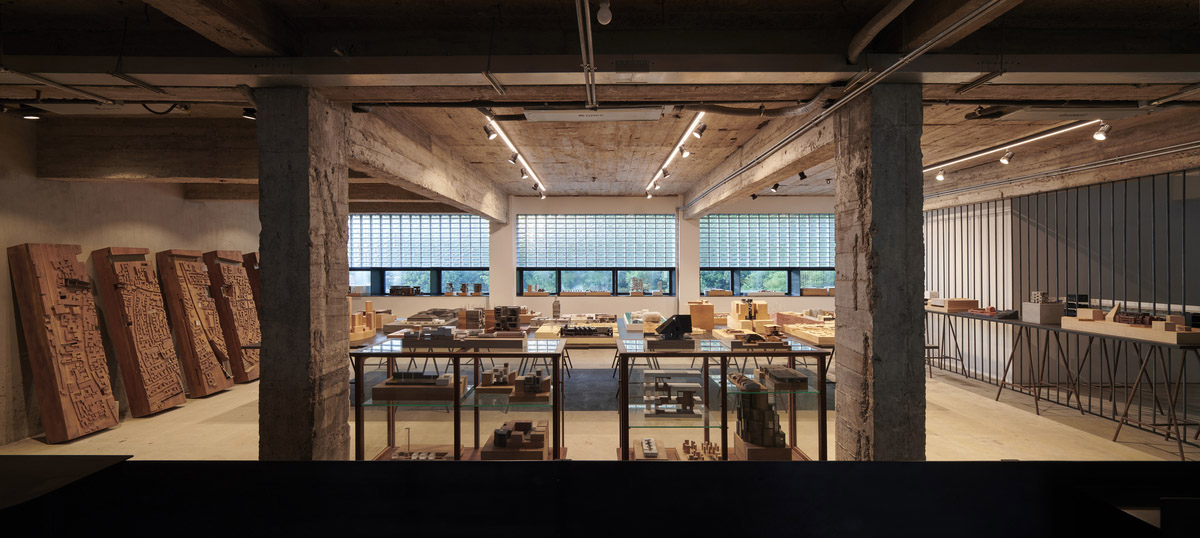
"The first renovation strategy was a reworking of the main façade, to completely shift its proportions and reading, without any major structural alterations. The repetitive and perfunctory windows of the existing building are partially infilled with glass bricks, while the bottom portion of new operable windows is strung together with a unifying black metal frame, creating the illusion of long horizontal ribbon windows. While the entire upper part of the building receives a coating of dark gray paint, the ground floor showcases a different material treatment," said Neri&Hu in a project description.
"Glazed green tiles define the rounded staircase that anchors one end of the building and continues across the undulating wall at the base, which dips in and out to signify access points. A deep canopy is added atop the ground floor to enhance the split in materials as well as offer a welcoming gesture on the street level."
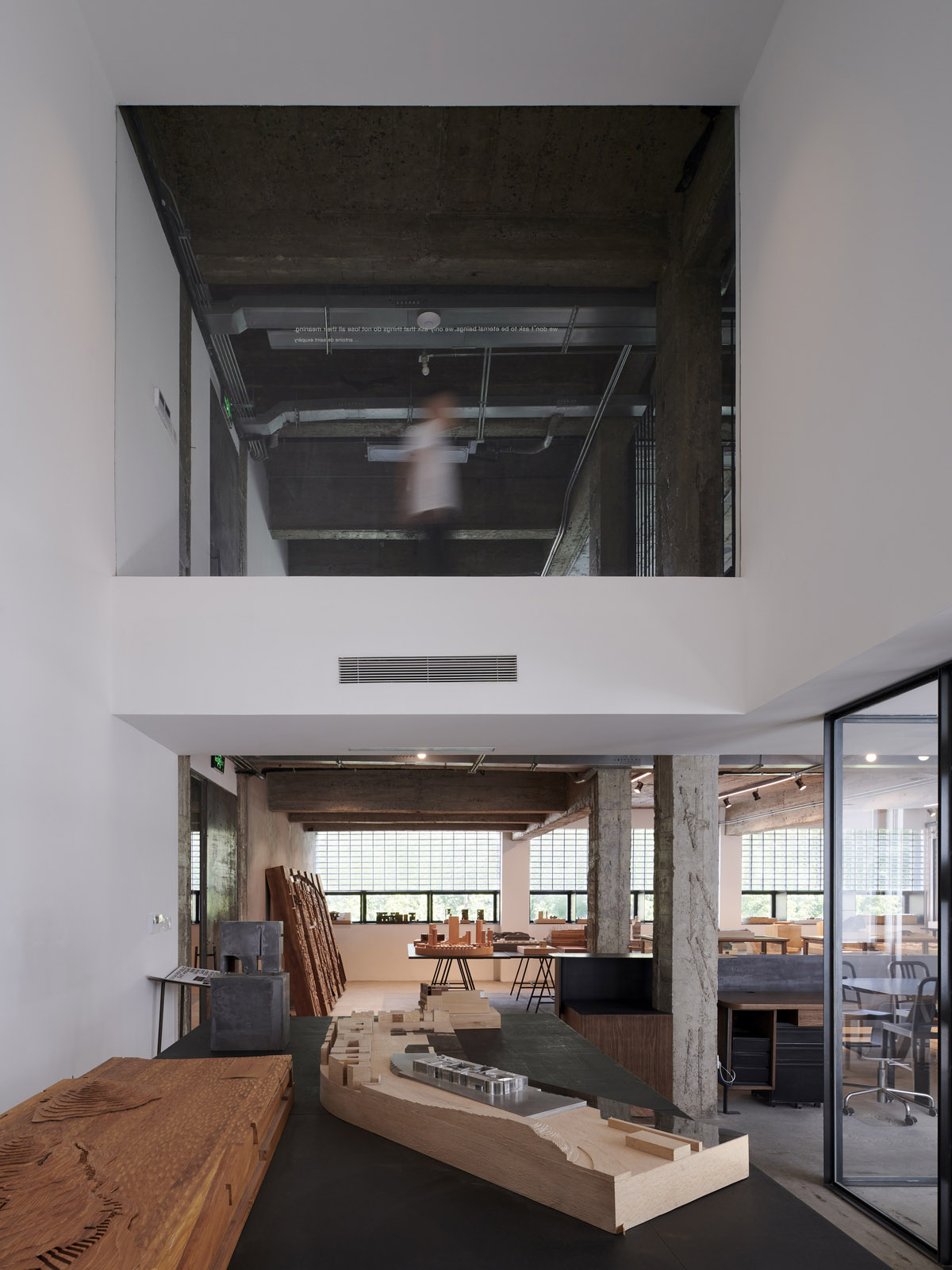
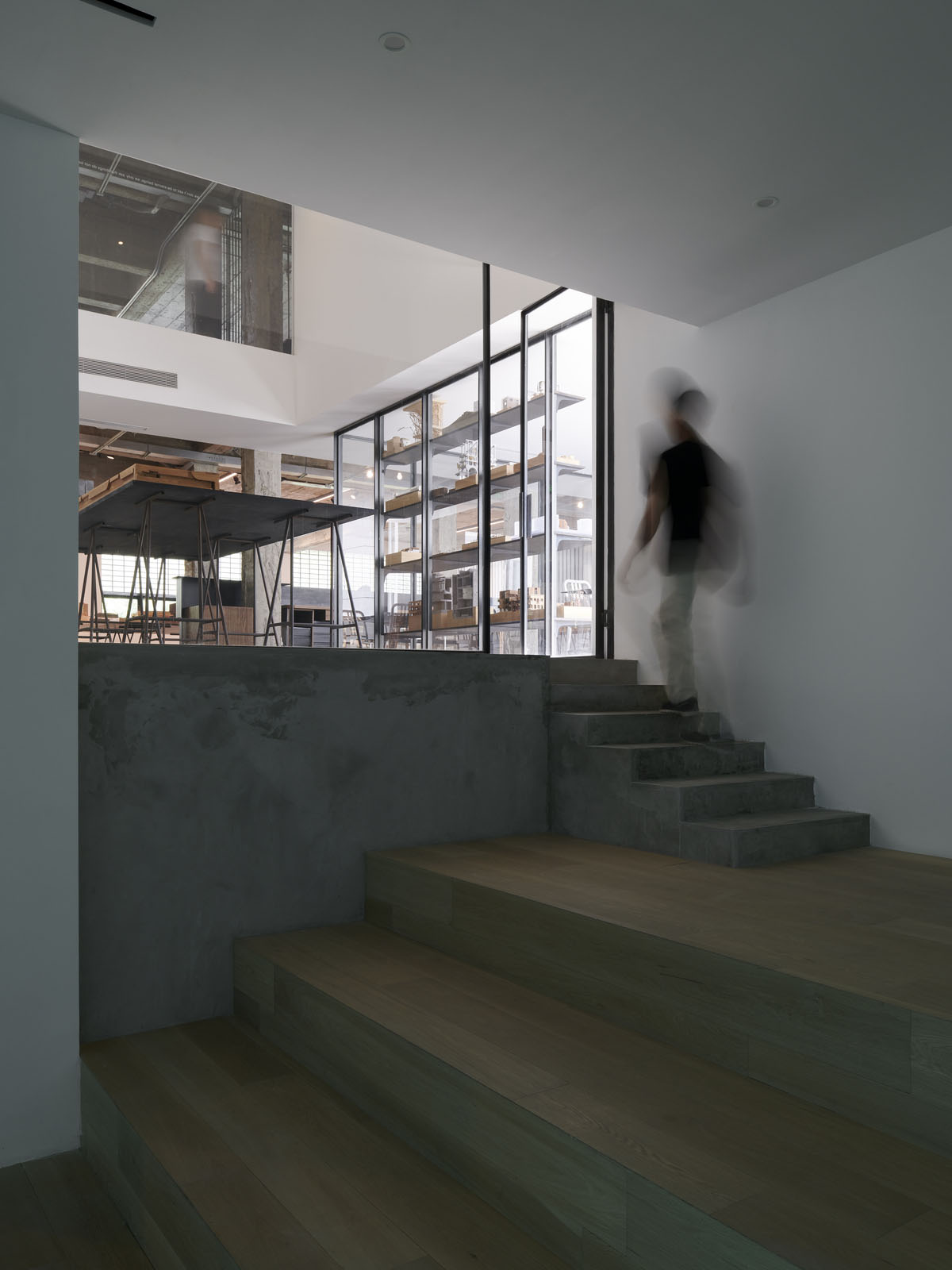
"The second strategy of this adaptive reuse project was to keep all the existing concrete post and beam constructions intact, in fact to celebrate them by leaving them fully exposed, despite minor flaws and irregularities. While maintaining the structural grid, a few selective cuts are made into slabs to introduce double-height spaces and a new internal staircase between the third and fourth floors."
"The deceivingly simple operation of cutting and deleting reveals the layers of spatial potential within a rather ordinary building configuration. Within and in between the existing columns, several sheets of steel and ribbed glass enclosures are added, while white box volumes house support spaces. Throughout, there is an expressed intention to juxtapose these new insertions against the old, never losing touch with the building’s past," added Neri&Hu in a project description.
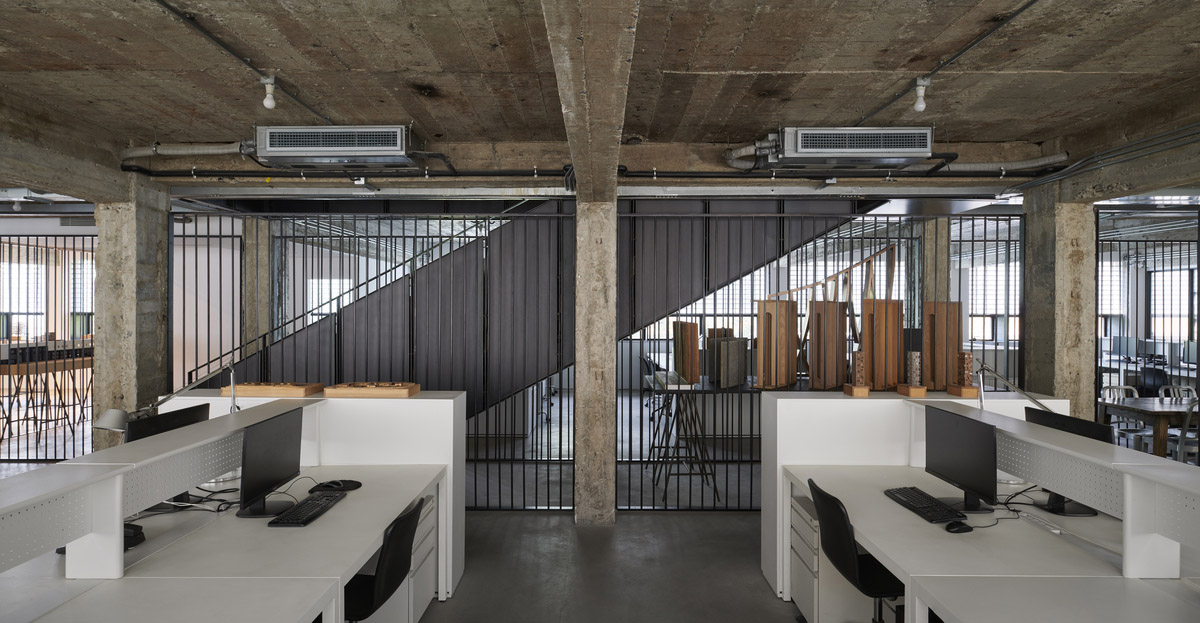
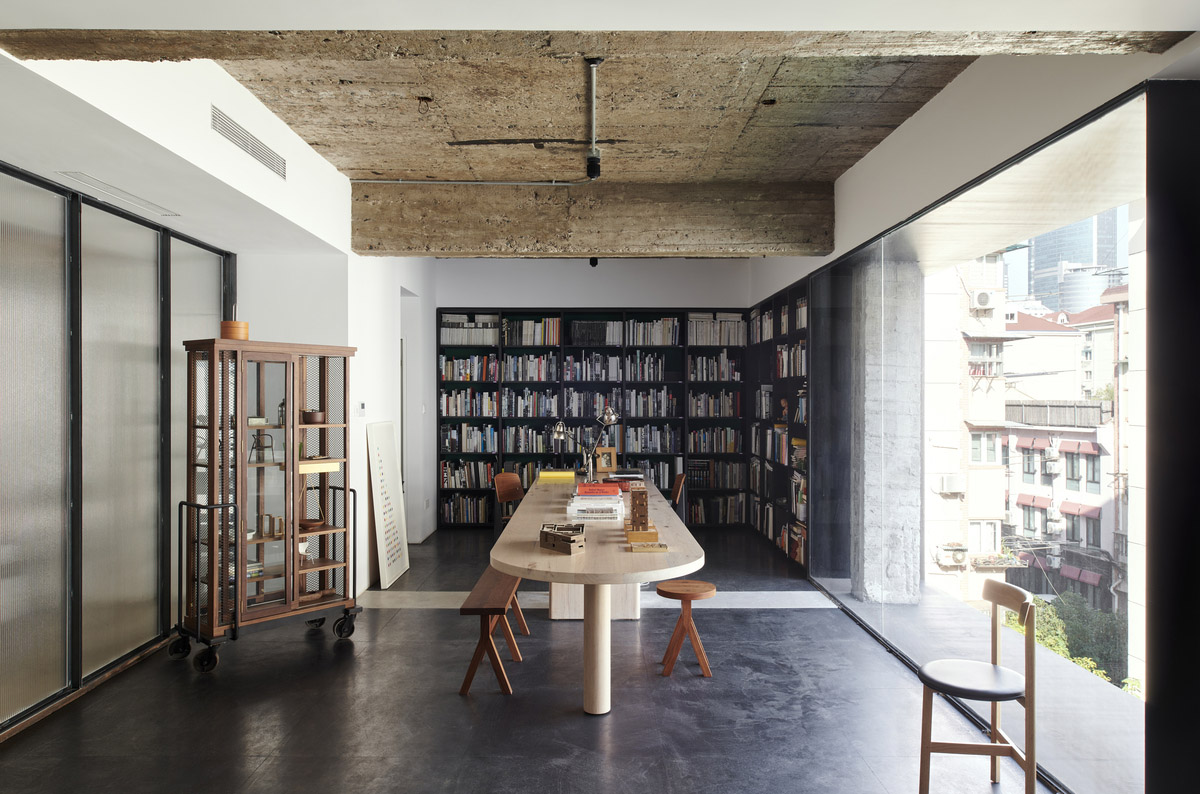
"Programmatically the ambition of this project was to build upon the notion of a "design commune" we had begun with our Design Republic flagship shop 10 years ago," Neri&Hu continued.
"The other tenants that were brought in to share our space— the Artling, Luneurs bakery, and furniture brands Stellar Works and Muuto—is a curated sampling of the broader design community in Shanghai and a collective creative platform that we hope to foster. The existing south staircase stitches together the main building with a few communal spaces open to the public: co-working and open kitchen facilities on the second floor, a 90m2 multipurpose event space on the mezzanine level between the second and third floor, as well as a rooftop garden."

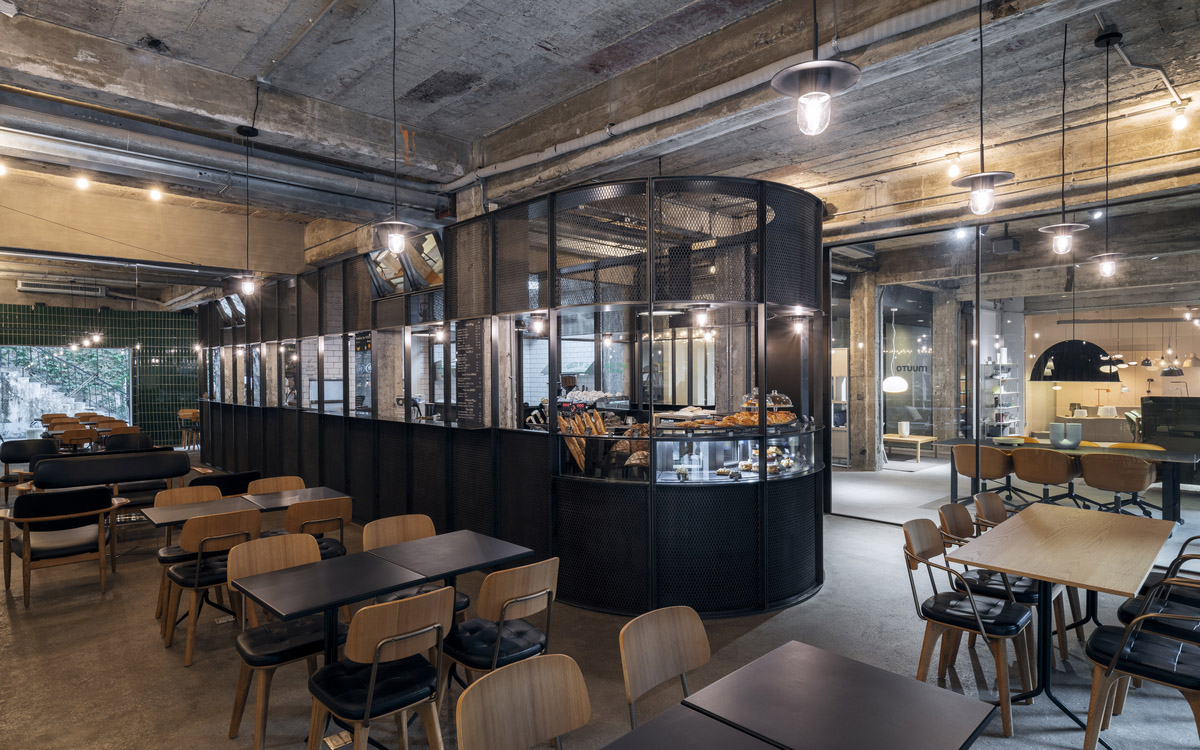
The studio adopts Walter Gropius's ideologies, in particular, from 'Scope of Total Architecture', to aimat "realizing standards of excellence, not creating transient novelties. Experiment once more became the center of architecture, and that demands a broad, co-ordinating mind, not the narrow specialist."
Neri&Hu believes the city's cultural, urban, and historic contexts functions as a point of departure for the architectural explorations involved in every project.
With Shanghai being at the forefront of the new global frontier, Neri&Hu "challenges traditional boundaries of architecture to include other complementary disciplines' as it believes strongly in research as a design tool, as each project bears its unique set of contextual issues."

"It was unquestionable that as a practice, we would deploy every aspect of our design capabilities, from the architecture and interiors to the furniture and graphic signage," said Neri&Hu.
"The studio believes in a total design vision through means of 'controlling built environments from the larges gestalt down to the smallest details."
"One will find a seamless integration of these elements, such as the shelving which extends from the steel mullions of the glass partitions, or the reception desk which envelops and integrates the structural column," continued Neri&Hu in a project description.
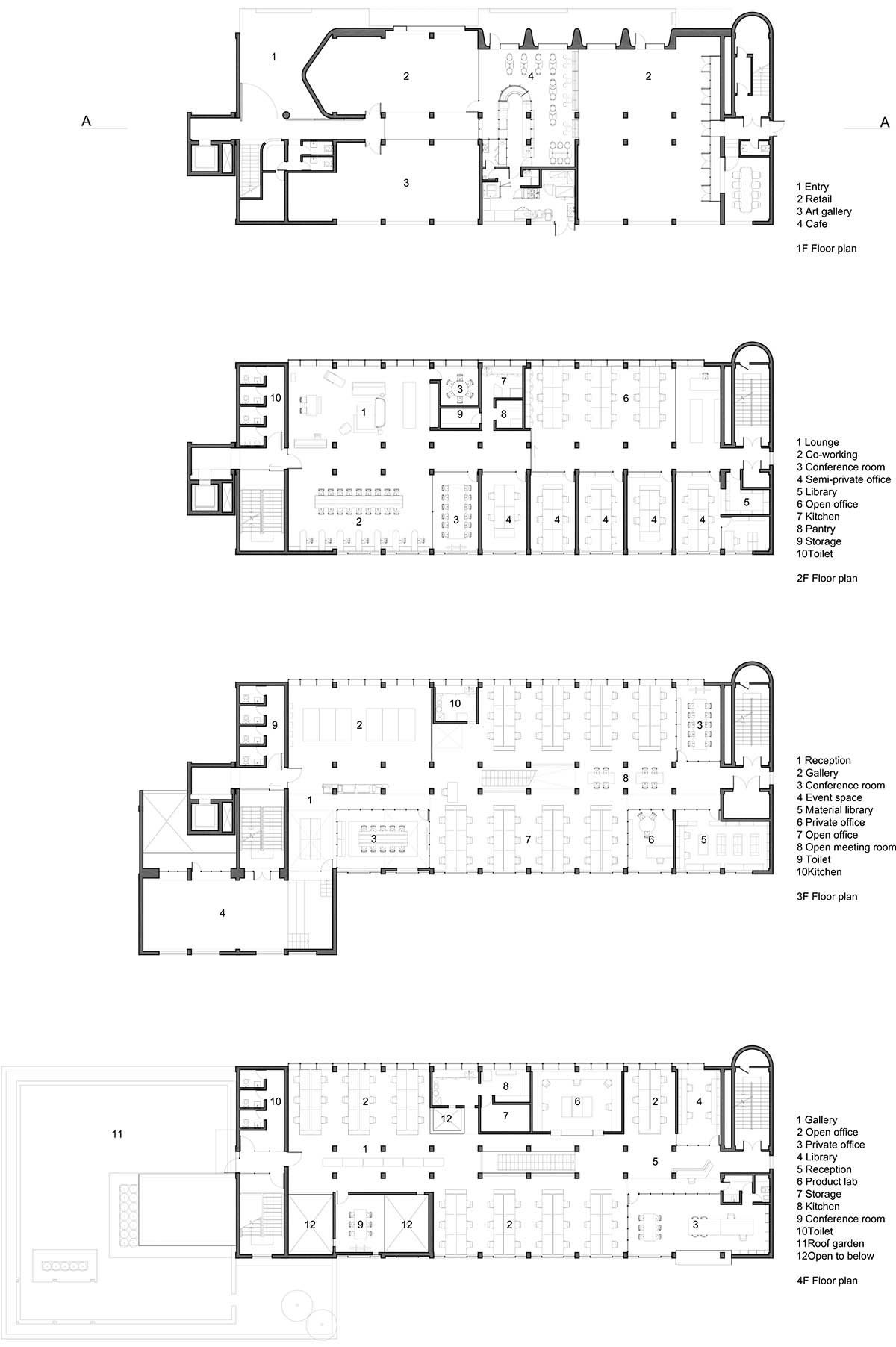
In the race for empty land and new developments, it is easy to demolish and forget the rich architectural history behind old buildings. The No.31 is making the case for readapting older buildings and enriching the architectural vocabulary of our cities, by creating a spacious and inviting space with its eclectic interior design style that encapsulates the spirit of the studio.
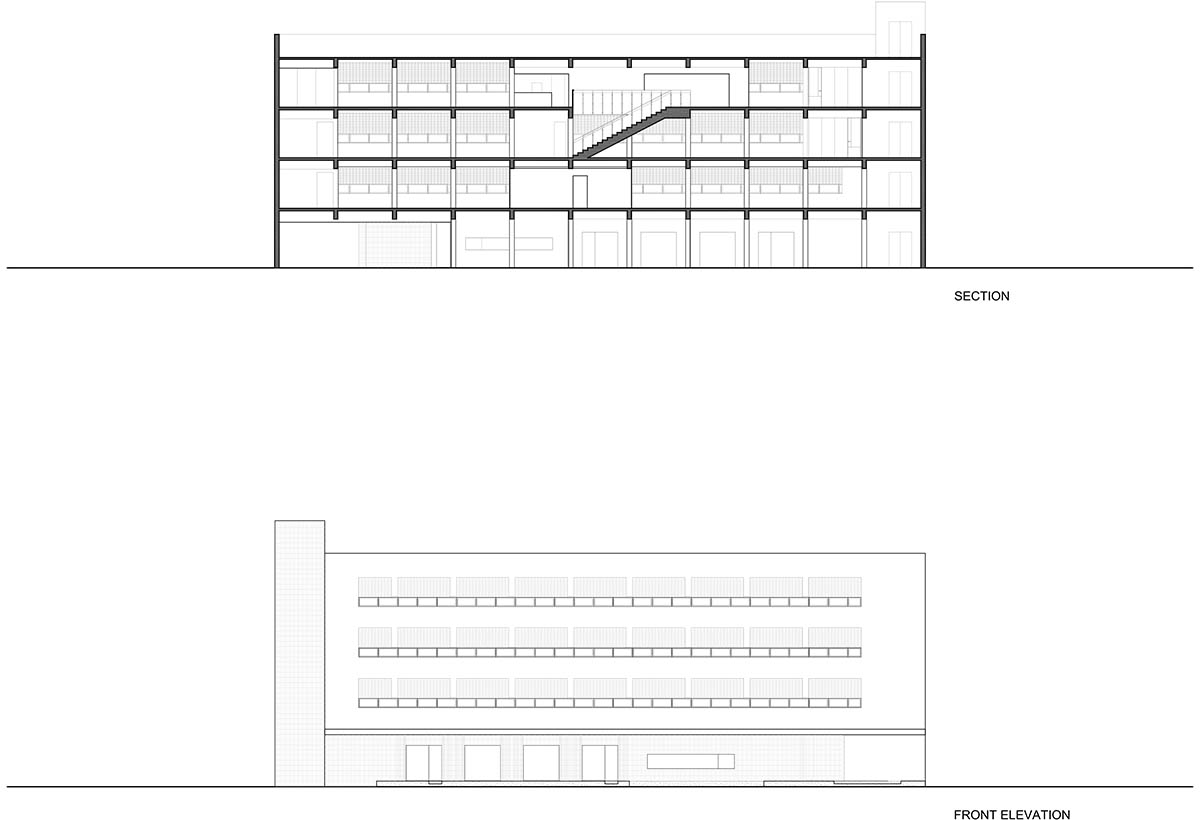
Other notable works of Neri&Hu include The Waterhouse at South Bund, The Void at Aranya Art Center, Sculpted Light the New Shanghai Theatre.
Project Facts
Project Name: No. 31
Site Address: 322 Jiaozhou Road, Building 31, Jing’an District, Shanghai, China
Project Type: Architecture Renovation and Interior Design
Architect & Interior Designer: Neri&Hu Design and Research Office
Design Period: April 2018 – August 2018
Gross Area: 2,400sqm
Program: Mixed-use (Retail, F&B, and Office)
Special Features: Renovation Project, Raw Concrete Structure, Curved façade with Tile, Open Office, Glass and steel boxes, Exhibition Space, Multi-purpose room, Rooftop garden
Façade – Materials:Glazed green tile, Black steel, Glass blocks, Black paint, Terrazzo floor, Doors (Walnut, steel glass)
Interiors – Materials:Ribbed glass, Raw steel, White paint, Reclaimed wood, White oak
Interiors – Feature Lighting: Viabizzuno
Interiors – Fixtures + Fittings: Duravit, Vola, Olivari
Interiors – Furniture:Custom workstations and storage (white painted steel) by N&H, Custom exhibition tables by N&H, De La Espada, Stellar Works, Magis, Vitra, BD Barcelona, Emeco
Design Team:
Lyndon Neri & Rossana Hu(Founding Partners, Principal in Charge)
Nellie Yang(Associate Director, Architecture)
Jerry Guo(Project Manager, Associate)
Nicolas Fardet (Associate, Product Design)
Lili Cheng (Senior Product Designer)
Haiou Xin(Senior Graphic Designer)
All images © Hao Chen
All drawings © Neri&Hu Design and Research Office